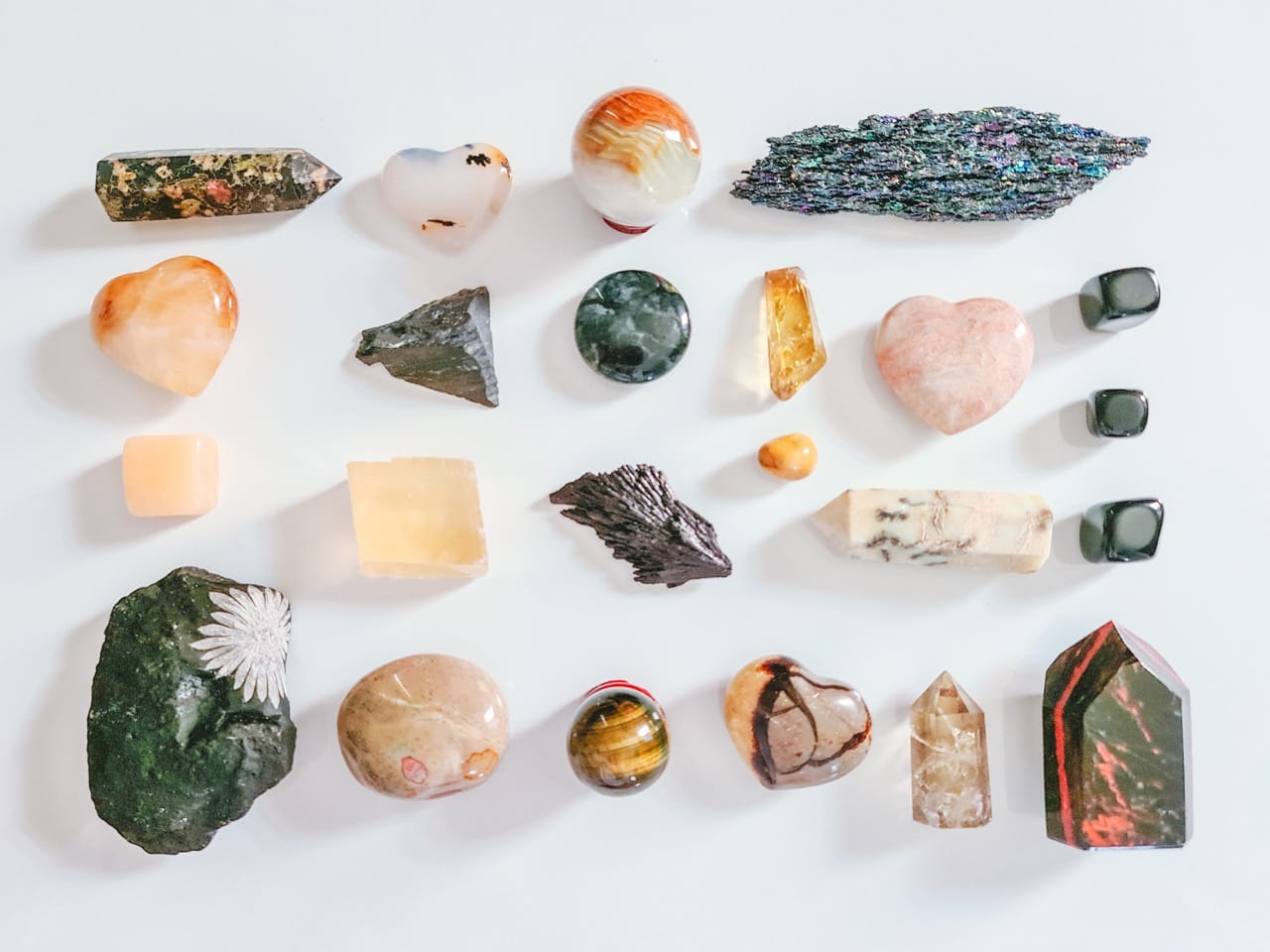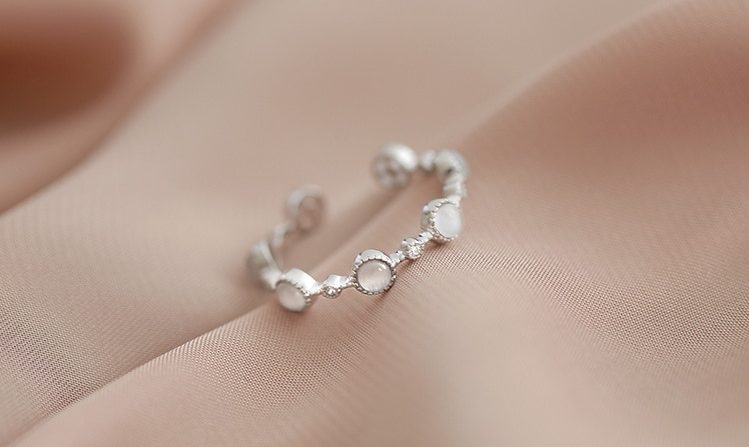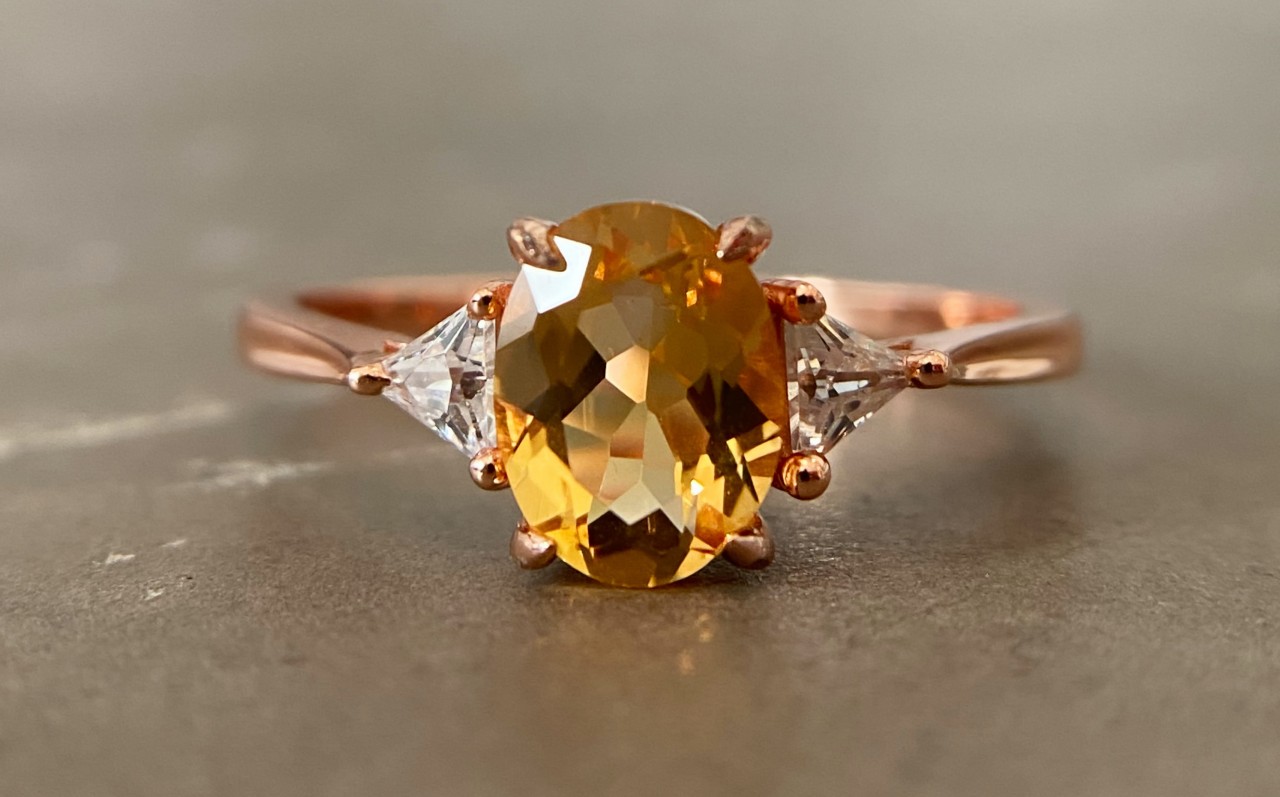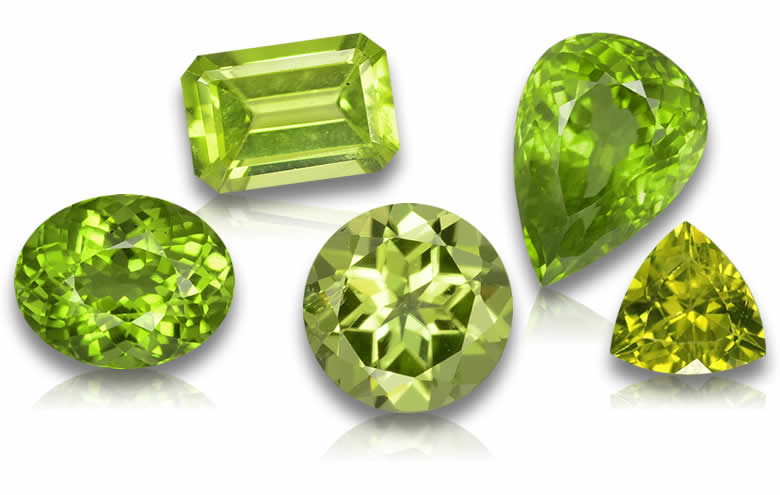Quick info about Ruby Birthstone
- Official birthstone: July
- Colors: Deep red to pinkish-red
- Meaning: Love, passion, courage, and vitality
- Zodiac signs: Cancer and Leo
- Mohs hardness: 9
Birthstones have been cherished and celebrated for centuries, and they hold a special place in many cultures around the world. These gemstones, often associated with the twelve months of the year, have captivated hearts and minds with their beauty and symbolism. Each birthstone carries its own unique qualities, making them more than just exquisite gems but also personal talismans.
Brief overview of birthstones
The tradition of assigning specific gemstones to each month can be traced back to ancient times. Different civilizations across various continents developed their own systems for associating gemstones with certain months or zodiac signs.
Birthstones were believed to possess mystical properties that brought luck, protection, and well-being to the wearer.
Introduction to Ruby as the birthstone for July
In this article, we delve into the mesmerizing world of rubies, the birthstone for those lucky enough to be born in July.
Rubies are known for their striking red color and exceptional brilliance that has captivated humans throughout history. As one of the most coveted gemstones, rubies have a rich tapestry of historical significance and cultural symbolism.
Rubies are not only an embodiment of beauty but also carry deep meaning and associations with love, passion, vitality, and wealth. Let us embark on a journey to explore the fascinating history, geological formation, physical properties, mining locations worldwide, famous rubies throughout history, symbolism attached to this magnificent gemstone called ruby.

Ancient Civilizations’ Fascination with Rubies
In ancient civilizations, rubies held a profound fascination and were considered one of the most precious gemstones. The allure of these fiery red stones captured the imagination of numerous cultures, and their significance can be found in texts, myths, and historical records.
One notable civilization that revered rubies was ancient India. In Hindu mythology, rubies were associated with the sun god Surya due to their vibrant red color, which symbolized vitality and power.
Indian kings and emperors often adorned themselves with ruby jewelry as a symbol of their royal status. Rubies were believed to bring good fortune, ward off evil spirits, and enhance one’s bravery in battle.
Ancient Egyptian civilization also held rubies in high regard. They associated these gemstones with their sun god Ra, considering them as personifications of his blood and life force.
Pharaohs embraced rubies for both ornamental purposes and for their perceived protective qualities. It was believed that wearing ruby jewelry would safeguard against illness or misfortune while bestowing wealth and prosperity upon the wearer.
Mention of Rubies in Ancient Texts and Myths
Ancient texts from various cultures frequently mention rubies due to their captivating beauty and rarity. In Sanskrit literature dating back thousands of years, references to “ratnaraj” or “king of gems” are often interpreted as allusions to rubies specifically.
These texts describe exquisite ruby jewelry worn by gods, goddesses, heroes, and celestial beings. Rubies are mentioned prominently in Greek mythology as well.
According to ancient Greek lore, they were believed to possess extraordinary powers capable of preserving health and promoting wisdom. For instance, it was said that if someone placed a ruby beneath their pillow while sleeping, it would prevent nightmares while allowing them to experience lucid dreams filled with insights.
Symbolism of Rubies in Different Cultures
Rubies hold diverse symbolic meanings across a wide range of cultures. In Chinese culture, rubies symbolize happiness, good fortune, and prosperity. They are often associated with the concepts of yin and yang, representing the balance between masculine and feminine energies.
Ancient Romans viewed rubies as a symbol of passion, love, and courage. It was believed that rubies could ignite desire within individuals and increase their vitality.
They were also cherished for their ability to bestow wisdom upon those who wore them. In modern Western culture, rubies are commonly associated with romance and passion.
These gemstones have become popular choices for engagement rings due to their intense red hue, which represents deep love and lasting ardor. The historical significance of rubies is deeply rooted in ancient civilizations’ fascination with these mesmerizing gemstones.
Ancient texts and myths mention rubies as symbols of power, protection, wisdom, love, and prosperity across various cultures. The enduring allure of rubies continues to captivate people today as they embrace the rich symbolism attached to these majestic gemstones.
Geological Formation and Characteristics of Rubies
Explanation of how rubies are formed in the Earth’s crust
Rubies are formed deep within the Earth’s crust through a combination of intense heat and pressure. They belong to the corundum mineral family, which also includes sapphires. Corundum is an aluminum oxide mineral that crystallizes in the hexagonal system.
The formation of rubies starts when aluminum-rich rocks, such as basalt or granite, come into contact with certain minerals containing chromium or iron. The formation process begins when these rocks experience enormous tectonic pressure due to plate movements beneath the Earth’s surface.
This pressure causes recrystallization of minerals within the rock, leading to the growth of corundum crystals over millions of years. As these crystals develop, traces of chromium or iron get incorporated into their structure, giving rise to the vibrant red color that characterizes rubies.
Introduction to corundum mineral family, which includes rubies and sapphires
The corundum mineral family is one of nature’s marvels, comprising some of the most precious gemstones known to man. It consists primarily of two gemstone varieties: rubies and sapphires.
While both share the same chemical composition (aluminum oxide), their strikingly different colors arise from variations in impurities present during their formation. Rubies owe their vivid red coloration mostly to trace amounts of chromium present within their crystal lattice structure.
This element imbues them with a fiery hue that ranges from pinkish-red to deep crimson tones. Sapphires, on the other hand, encompass all other colors within the corundum family spectrum – blue being perhaps the most renowned shade but also including yellow, green, orange, and even rare purple varieties.
Factors influencing the color and quality of rubies
Several factors contribute to the color and overall quality of rubies. The primary determinant is the presence and concentration of chromium impurities within the crystal structure. Higher levels of chromium result in more intense red hues, while lower concentrations may lead to pink or almost purple tones.
Another essential factor is clarity, which refers to the absence of inclusions or internal flaws within the gemstone. Rubies with few visible inclusions are considered more desirable and fetch higher prices.
However, certain types of inclusions, such as needle-like rutile crystals or silk-like intersecting lines called “silk,” can enhance a ruby’s appearance by creating unique optical phenomena like asterism (the star effect) or a velvety sheen known as a “cat’s eye.” In addition to color and clarity, carat weight also influences a ruby’s value.
Larger rubies are generally rarer and command higher prices than smaller ones. Cut plays an essential role in revealing a ruby’s brilliance and maximizing its optical properties.
Skilled lapidaries carefully fashion each stone to maximize its beauty while retaining as much weight as possible. Understanding these formation processes and factors influencing ruby quality allows us to appreciate the exquisite beauty that radiates from this July birthstone—a gemstone that has captivated humanity for centuries with its mesmerizing allure.

Physical Properties and Color Variations of Rubies
Detailed Description of Ruby’s Hardness, Transparency, and Refractive Index
Rubies are known for their exceptional physical properties, making them one of the most sought-after gemstones. The hardness of a ruby is an important characteristic that contributes to its durability and desirability.
Ranking 9 on the Mohs scale of mineral hardness, rubies are surpassed only by diamonds in terms of durability. This remarkable hardness ensures that rubies can withstand everyday wear and tear, making them ideal for use in jewelry.
In addition to their hardness, rubies possess excellent transparency when properly cut and polished. This transparency allows light to pass through the gemstone, enhancing its brilliance and luster.
The refractive index of rubies ranges from approximately 1.76 to 1.78, which means they have a relatively high level of light dispersion. This property gives rubies their distinctive fiery glow as they reflect and refract light within the gem.
Explanation of the Different Shades and Hues Found in Rubies
Rubies exhibit a wide range of colors within the red spectrum, with variations in hue, tone, and saturation creating distinct visual characteristics. One particularly renowned hue is referred to as “pigeon blood red.” This term describes a richly saturated deep red color with a hint of blue undertone resembling the blood drawn from a freshly killed pigeon—a rare and highly prized shade among collectors. Another popular color variation found in rubies is pinkish-red or purplish-red tones.
These hues often display an alluring blend between pink and red with varying levels of saturation. While they may not reach the intensity seen in pigeon blood red rubies, these softer shades have their own unique charm that appeals to many individuals seeking understated elegance.
It’s worth noting that natural rubies can also exhibit secondary hues, such as orange or purple. While these secondary hues may add an interesting twist to the gemstone, the most valuable rubies tend to have primary hues that are pure and free from any secondary coloration.
Rubies possess remarkable physical properties that contribute to their desirability as gemstones. Their exceptional hardness ensures their longevity and durability, while their transparency and refractive index allow for brilliant light reflection and dispersion.
Moreover, the color variations found in rubies, ranging from intense pigeon blood red to delicate pinkish-red tones, offer a multitude of choices for those seeking this captivating gemstone. Whether one is drawn to the deep red hues or prefers a more subtle touch of pinkish-red, rubies truly captivate with their unique beauty.
Ruby Mining Locations around the World
Overview of major ruby deposits worldwide
Rubies, known for their vibrant red color and exceptional beauty, can be found in various regions around the world. Some of the most notable ruby deposits are located in Myanmar (formerly Burma), Thailand, and Sri Lanka.
These countries have a long history of producing high-quality rubies that are highly sought after in the gemstone industry. Myanmar has been renowned as a primary source of premium rubies for centuries.
The Mogok Valley, located in central Myanmar, is particularly famous for its exceptional rubies with a rich pigeon blood red hue. The region’s unique geological formations have created ideal conditions for the formation of these precious gemstones.
Rubies from Mogok Valley are highly valued due to their intense color, clarity, and often larger sizes compared to those found elsewhere. Thailand is another significant producer of rubies, particularly from its Chanthaburi province.
Known as “Siam Rubies,” these gems display a range of hues from deep red to pinkish-red. Thailand’s skilled lapidaries also excel in enhancing the aesthetic appeal of these rubies through expert cutting techniques.
Sri Lanka, historically recognized as Ceylon, is renowned for its gemstone industry and is a prominent source of fine-quality rubies. The country’s gem-rich areas such as Ratnapura and Elahera have yielded remarkable rubies with varying shades of red and excellent transparency.
Description of famous mines renowned for producing high-quality rubies
The Mogok Valley in Myanmar stands out as one of the legendary mining regions for exquisite rubies. It has been referred to as “The Land of Rubine” due to its immense wealth in this precious gemstone. The area boasts numerous mines that have produced some extraordinary stones throughout history.
The miners meticulously extract rough stones from the depths of the earth, which are later cut and polished to reveal their exceptional beauty. In Thailand, the Bo Rai mine located in Chanthaburi province has gained recognition for its high-quality rubies.
These rubies display a deep red color and possess excellent clarity. The mine is known for its sustainable mining practices and has been a source of employment for local communities for generations.
In Sri Lanka, Ratnapura is a well-known ruby mining area. Translated as “City of Gems,” Ratnapura has been a significant hub for centuries.
The mines here produce rubies with varying hues, including vibrant reds and pinkish-red tones. Mining in Ratnapura involves both traditional methods, such as panning in riverbeds, as well as modern methods like mechanized mining to extract rough gemstones.
Mentioning lesser-known but significant ruby mining regions
While Myanmar, Thailand, and Sri Lanka dominate the global ruby industry, there are other notable regions where rubies are mined but may receive less attention. One such region is Madagascar, an island off the eastern coast of Africa. Madagascar produces rubies with distinct characteristics including deep red coloration often tinged with purple undertones.
Another lesser-known region is Vietnam’s Luc Yen district. Rubies found here exhibit varying shades ranging from bright red to purplish-red hues and often display unique patterns that make them highly desirable to collectors.
Other countries like Tanzania, Kenya, and Mozambique also have emerging ruby deposits that have started gaining recognition in recent years. These lesser-known but significant ruby mining regions serve as additional sources of these precious stones and contribute to the diversity found within the global market for rubies.
Famous Rubies throughout History
Ruby Slippers from “The Wizard of Oz”
One of the most iconic references to rubies in popular culture is undoubtedly the pair of Ruby Slippers worn by Dorothy Gale in the beloved film adaptation of L. Frank Baum’s “The Wizard of Oz.” These sparkling shoes became a symbol of magic and wonder as they transported Dorothy back home to Kansas. The ruby slippers, adorned with thousands of genuine red rhinestones, were originally silver in Baum’s book but were changed to ruby for the vibrant Technicolor movie. Their mesmerizing allure captivated audiences worldwide, and they continue to be sought-after collectibles today.
The Sunrise Ruby – one of the world’s most expensive gemstones
The Sunrise Ruby is a truly exceptional gemstone that has broken several records and captivated gem lovers worldwide. Weighing an impressive 25.59 carats, this Burmese ruby holds a remarkable pigeon blood red color, known for its intense saturation and hint of blue undertones.
The Sunrise Ruby set a new world record when it was sold at auction in 2015 for over $30 million, making it one of the most expensive gemstones ever sold. This magnificent ruby bears an enthralling history that adds to its allure.
Discovered almost a century ago in Burma’s famous Mogok Valley region, it was named after a poem written by Edward Hughes, describing the enchanting beauty encountered during his time exploring Burma. With its exceptional clarity and unrivaled color intensity, this rare gemstone stands as an embodiment of nature’s marvels.
Beyond its monetary value, the Sunrise Ruby encapsulates emotions and evokes imagination with its vibrant hue and historical significance. Its captivating beauty reminds us that rubies have long been associated with passion, vitality, and even protection against misfortune.
Additional notable rubies
While the Ruby Slippers and the Sunrise Ruby are undoubtedly famous, there are many other notable rubies throughout history that deserve recognition. One such example is the “Rosser Reeves Star Ruby,” a 138.7-carat star ruby considered one of the finest in its class. Its unique asterism, caused by intersecting needle-like inclusions, creates a mesmerizing six-rayed star pattern that seems to dance across its surface.
Another remarkable ruby is the “DeLong Star Ruby,” weighing 100.32 carats and boasting a vivid red color with superb transparency. This gemstone exhibits an extraordinary star effect due to light reflecting off rutile needles within it.
These outstanding examples serve as reminders of rubies’ enduring allure and their ability to captivate and inspire awe throughout history. From movie magic to record-breaking auctions and breathtaking natural wonders, these famous rubies continue to fascinate gem enthusiasts worldwide, perpetuating the timeless charm of this captivating gemstone.
Ruby Symbolism and Meaning
The Blood-Red Spark of Passion
Ruby, with its captivating deep red hues, has long been associated with powerful symbolism across cultures. The color itself signifies energy, strength, and vitality.
In ancient times, the vibrant red of rubies was often linked to blood and fire, evoking intense emotions and inspiring awe. This gemstone is believed to possess a fiery essence that can ignite passion within the human spirit.
A Token of Love and Devotion
Ruby’s symbolic association with love has made it a popular choice for engagement rings and other romantic jewelry throughout history. Its radiant red hue serves as an emblem of enduring love, deep affection, and strong emotional bonds. Rubies have been cherished as precious tokens exchanged between lovers as a testament to their commitment and passion.
An Amulet of Protection
In addition to its romantic connotations, rubies have also been revered for their protective powers throughout various cultures. Ancient civilizations believed that wearing a ruby could ward off negative energies and shield against harm or misfortune. It was thought to bestow courage upon the wearer while promoting good health and revitalizing vitality.
Symbolism in Eastern Traditions
In many Eastern cultures such as Hinduism and Buddhism, rubies hold significant spiritual meaning. Ruby is associated with the root chakra in Hindu traditions, representing fire energy that brings power, motivation, and transformation. It is also regarded as a stone that supports heart-centered spirituality.
Conclusion
As we conclude our exploration into the symbolism and meaning behind rubies, we are reminded of their profound significance throughout history. From ancient civilizations to modern-day romantics, this exquisite gemstone continues to captivate hearts with its fiery allure.
Symbolizing love, passion, vitality, protection against negative forces,and spiritual awakening, rubies possess a timeless charm that transcends cultural boundaries. Let us embrace the essence of the ruby, allowing its vibrant energy to ignite our passions and kindle our inner fire.
May it serve as a reminder to cherish and nurture the deep connections we share with others, and may it inspire us to live each day with passion and purpose. In a world that often demands resilience, let the ruby be a talisman of strength and fortitude, guiding us through life’s challenges with unwavering optimism.





